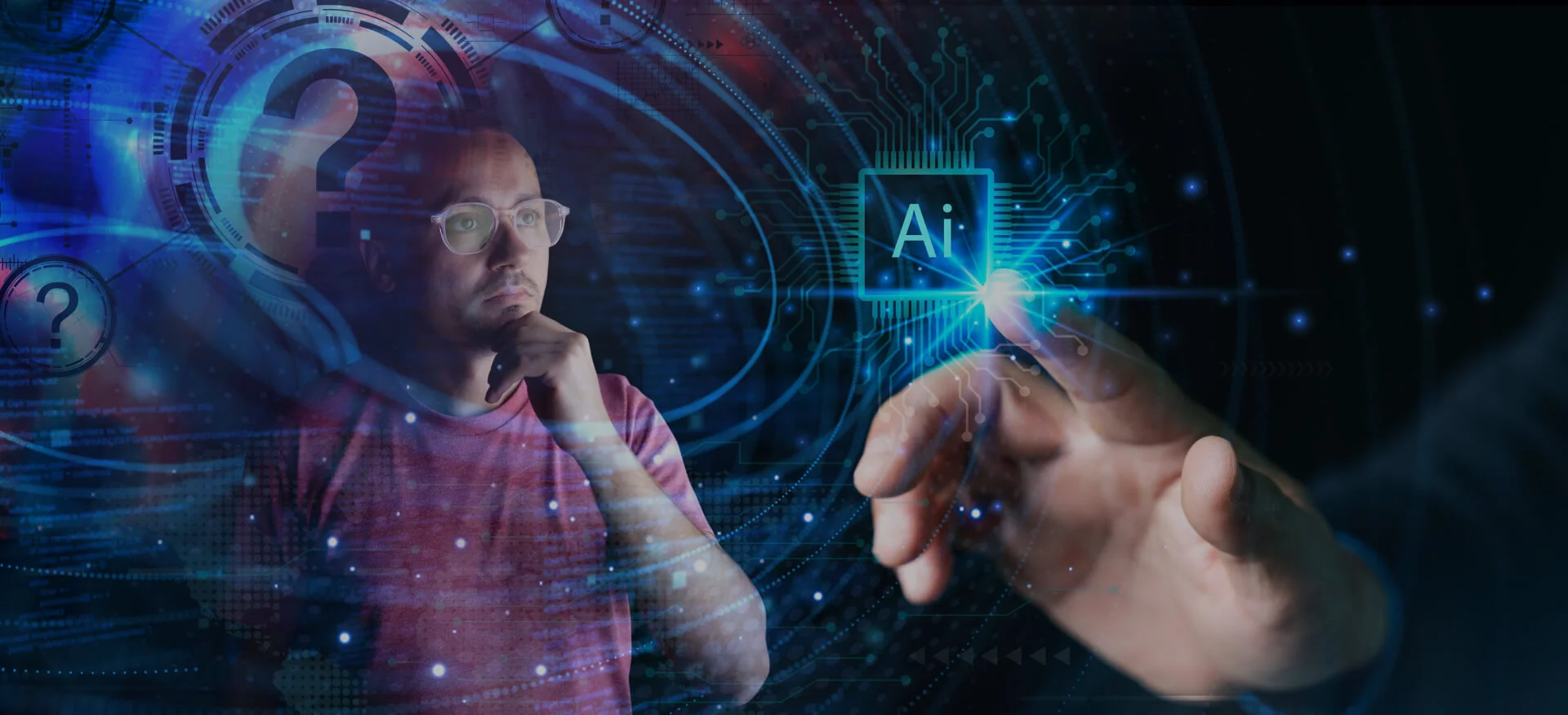The H-1B visa program has historically been a crucial vehicle for the U.S. tech industry to source highly specialized foreign talent, especially in fields such as software development, engineering, data science, and cybersecurity. The program, while providing opportunities for skilled professionals from countries like India, China, and Eastern Europe, also came with substantial costs, not just financial but also in terms of visa processing, compliance, and, most recently, the imposition of a $100,000 fee on new H-1B applications.
In tandem with these regulatory shifts, artificial intelligence (AI) has been making tremendous strides, especially in areas once dominated by highly skilled foreign labor. From automating code generation and data analytics to replacing human cybersecurity experts, AI agents are stepping into roles that were previously the domain of foreign H-1B workers, raising the question: Has AI made foreign workers obsolete?
In this article, we explore how the increasing automation through AI is transforming the global tech workforce, focusing on high-skill jobs, jobs once filled by foreign workers, and analyzing the long-term economic and societal implications. We will examine the rise of AI-powered tools in critical areas, such as software development, cybersecurity, data science, and customer service, and whether these innovations signal the obsolescence of foreign labor, particularly in the context of the $100,000 H-1B visa fee.
The Unfolding AI Revolution: From Tool to Autonomous Workforce
AI’s impact on the workforce is not limited to routine, low-skill tasks; it has begun to infiltrate and even dominate roles that were once seen as highly specialized. Machine learning (ML) and natural language processing (NLP) have unlocked capabilities that go far beyond automation, they are redefining the very nature of high-skill jobs.
1. Software Development: The AI-Driven Code Revolution
For decades, the H-1B visa has been a cornerstone for companies looking to hire foreign developers, particularly for roles in software engineering, system architecture, and product design. The demand for highly skilled foreign talent has been immense, with foreign workers accounting for a large percentage of the software engineering workforce in the U.S.
However, this model is now being disrupted by AI-powered code generation tools such as GitHub Copilot (powered by OpenAI Codex) and Tabnine, which are dramatically reducing the time and effort needed to write complex code. These tools are not merely autocomplete functions; they are fully-fledged AI agents capable of writing entire blocks of code, suggesting optimizations, detecting bugs, and even refactoring code to improve performance.
These tools leverage large language models that have been trained on massive datasets of code from GitHub, Stack Overflow, and other developer resources. By analyzing the context of the code being written, they automatically generate code snippets, entire functions, or even entire applications based on a developer’s instructions in natural language.
What’s more, AI is increasingly capable of performing the tasks traditionally handled by foreign developers. For instance, AI can now handle the maintenance and improvement of existing codebases, tasks that once required foreign developers to manually fix bugs, write patches, or update system architecture. With these capabilities, the need for foreign workers to fill entry-level to mid-tier developer roles is significantly reduced, especially for tasks that AI can handle faster and with fewer errors.
2. AI in Cybersecurity: Outsourcing the Defense to Machines
In cybersecurity, where foreign experts have traditionally been hired for network security, penetration testing, and incident response, AI is now taking the reins. In fact, AI systems are capable of autonomously detecting and responding to cyber threats in real-time, learning from past attacks, and adapting their defenses accordingly.
Platforms like Darktrace, CrowdStrike, and Sophos XG Firewall utilize machine learning algorithms to continuously analyze network traffic and identify anomalies that might signal a cyber attack.These AI systems are not merely alerting human analysts to potential threats, they are taking action autonomously, blocking access, isolating compromised systems, and even deploying countermeasures.
This marks a dramatic shift from the traditional reliance on human cybersecurity experts, many of whom were hired on H-1B visas. As AI systems become more advanced, they are handling complex threat detection and automated response tasks that previously required a team of foreign professionals to monitor networks, investigate potential breaches, and remediate security flaws. AI's scalability and real-time processing capabilities make these foreign cybersecurity roles increasingly redundant.
3. AI-Powered Data Science: Automating Analytics and Decision-Making
Foreign data scientists and analysts have been essential for companies in the U.S. to derive actionable insights from vast amounts of data. However, AI-powered analytics platforms have rapidly transformed this space. Platforms like Google Cloud AI, Amazon SageMaker, and Microsoft Azure Machine Learning are automating much of the data science workflow, from data preprocessing and feature selection to model building and predictive analytics.
AI is capable of performing complex analyses that were once the domain of highly skilled data scientists. For instance, machine learning models can automatically detect trends, identify correlations, and even predict future business outcomes with minimal human intervention. In this changing landscape, Cenrtric, a digital transformation agency, plays a crucial role in helping companies adapt to these AI-driven shifts, ensuring smooth transitions and optimized customer engagement through automated solutions. These systems not only eliminate the need for manual data entry and cleaning (tasks traditionally performed by foreign data analysts) but also automate the decision-making process, enabling companies to act on insights instantly.
The ability of AI to scale analytics across vast datasets without the need for human oversight is further reducing the demand for foreign labor in data science. In particular, AI systems are capable of continuously learning and adapting to new data, ensuring that businesses always have access to the most up-to-date insights without relying on a foreign workforce to manage the process.
3. AI in Customer Support: Replacing Offshore Call Centers
The tech industry has long relied on offshore call centers and customer support teams filled with foreign workers to handle customer service inquiries. Whether through voice support, live chat, or email responses, businesses have outsourced these roles to countries where labor is cheaper, enabling 24/7 availability at scale. AI, specifically natural language processing (NLP) models, is increasingly taking over these tasks. Platforms like Zendesk’s Answer Bot, Intercom, and IBM Watson Assistant are capable of automating customer service interactions, providing real-time support, handling technical issues, and personalizing responses based on previous interactions.
These AI-powered systems are not only improving efficiency but are also enhancing customer experience by providing faster, more consistent responses. As these AI systems become more sophisticated, the need for offshore customer support agents many of whom were hired through the H-1B program is diminishing, as AI is now capable of handling even complex queries and technical troubleshooting without the need for human intervention. In parallel, businesses are leveraging digital transformation strategies and embracing tools that integrate Software development services to streamline their operations further.
The Economic and Societal Implications of AI Replacing Foreign Labor
The shift towards AI-driven automation in the tech sector has profound implications for the global workforce, especially concerning the H-1B visa program. The $100,000 visa fee which already represented a significant cost burden for companies hiring foreign workers is now compounded by the efficiency and scalability AI offers. In an environment where AI agents can outperform human workers in software development, cybersecurity, data analytics, and customer service, the incentive for companies to hire foreign labor has significantly diminished.
However, this AI-driven displacement raises significant societal questions. As AI continues to take over more complex tasks, it challenges the traditional value proposition of foreign labor in high-skill industries. Is this the beginning of a broader shift away from global talent mobility and towards more automated workforces? If so, what does this mean for the future of global labor markets, and how will countries with large populations of skilled foreign workers such as India and China respond to this shift? Furthermore, businesses are increasingly focusing on digital marketing strategies to adapt to the changing landscape, ensuring they remain competitive despite workforce automation.
Conclusion
The rise of AI and automation in tech industries is transforming how work is performed, displacing foreign workers in roles that were previously seen as indispensable. While the $100,000 H-1B visa fee may have been the catalyst for this shift, it is AI’s capabilities that are truly reshaping the workforce. AI agents are taking over high-skill jobs, from coding to cybersecurity and data analysis, providing companies with more cost-effective, scalable solutions that don’t require the complexities of international hiring.
But this shift should not be seen as a simple replacement of foreign talent. Rather, it is the redefinition of work itself. AI is not just replacing foreign workers; it is augmenting the tasks they once performed and shifting the focus to more strategic, high-value roles that require human creativity and problem-solving. In this new era, the future of work in the tech industry will be increasingly driven by collaboration between human intelligence and machine intelligence. While foreign labor may no longer be as central to the tech workforce as it once was, the role of human workers will continue to evolve, focusing on areas where AI cannot replace human ingenuity creating a more dynamic, efficient, and innovative future for the global workforce.









